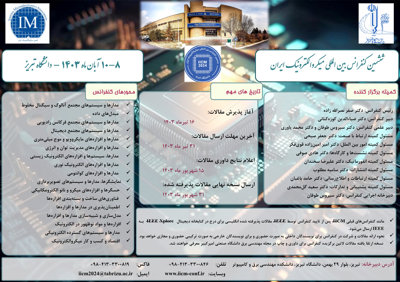0% Complete

نویسندگان :
کلمات کلیدی :
چکیده :
لیست مقالات بایگانی شده
افشین احمدپور - امیر حبیب زاده شریف - فائزه بهرامی چناقلو
Reza MirAlvandi - Mahdi Ehsanian
Maedeh Ghaderi - Arvin Delavari - Faraz Ghoreishy - Sattar Mirzakuchaki
Fatemeh Hamedvasighi - Majid Shalchian
علیرضا جعفری تازه کند - جواد جاویدان
Yeganeh Moradzadeh Rezaei - Mortaza Mojarad
Amir Noroolahi - Farshad Babazadeh
Reza Shokri - Yarallah Koolivand - Omid Shoaei - Orazio Aiello - Daniele Caviglia
مریم بازگیر - اکرم شیخی
Alireza Shafiei - Mehrnaz Monajati


